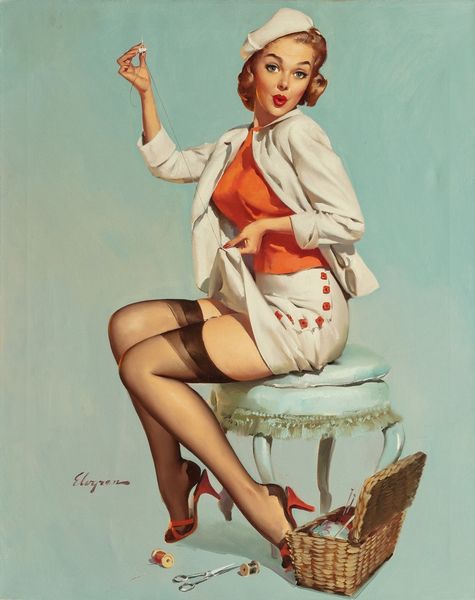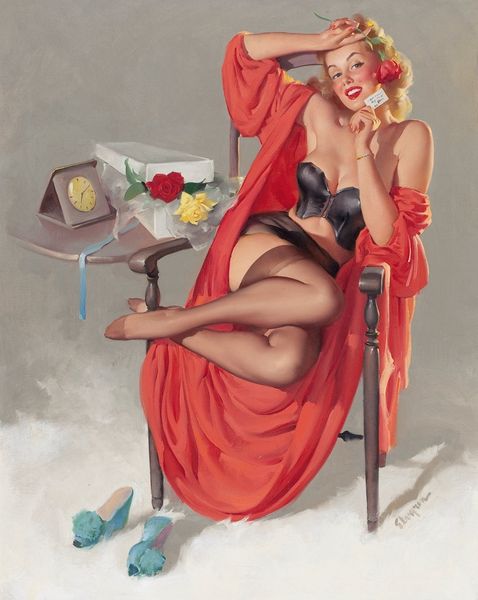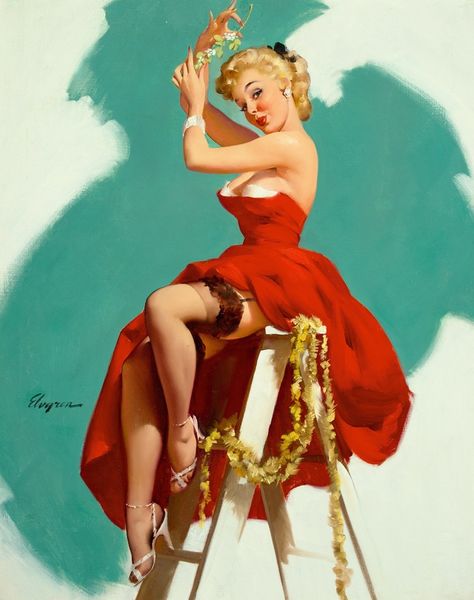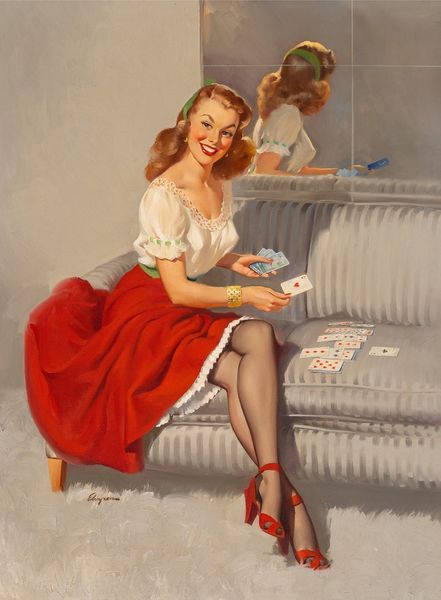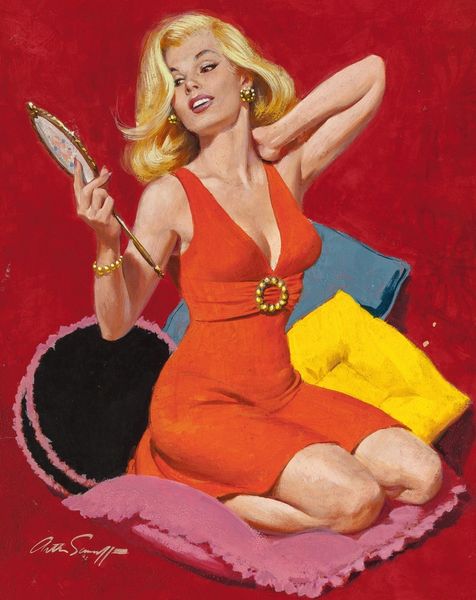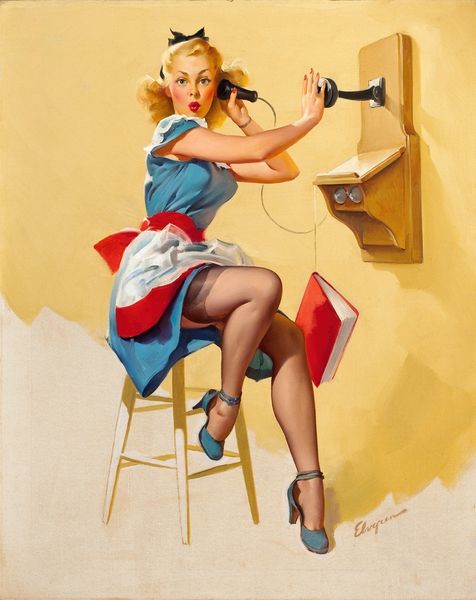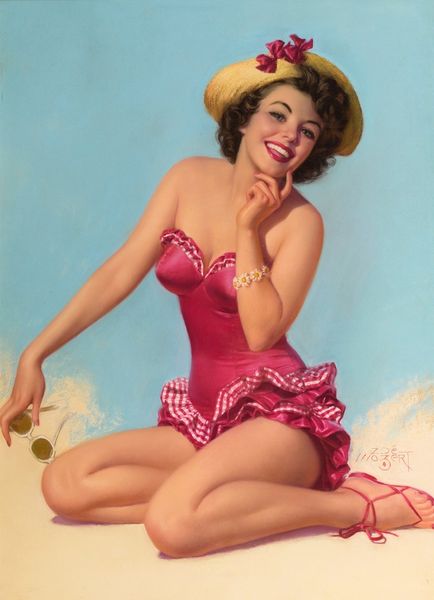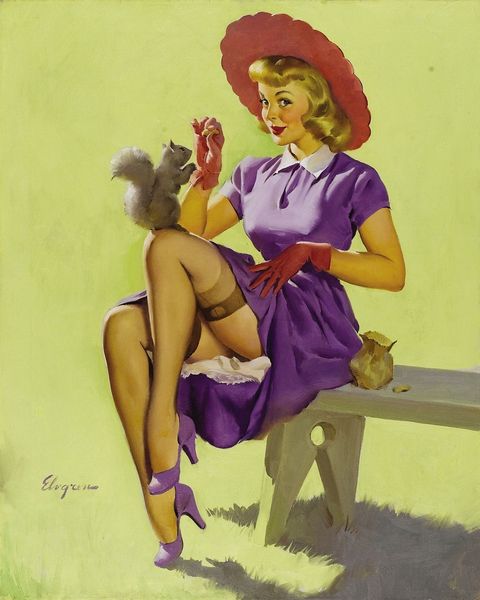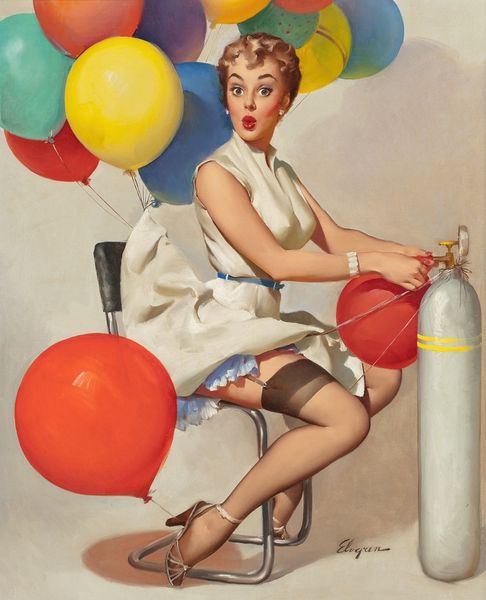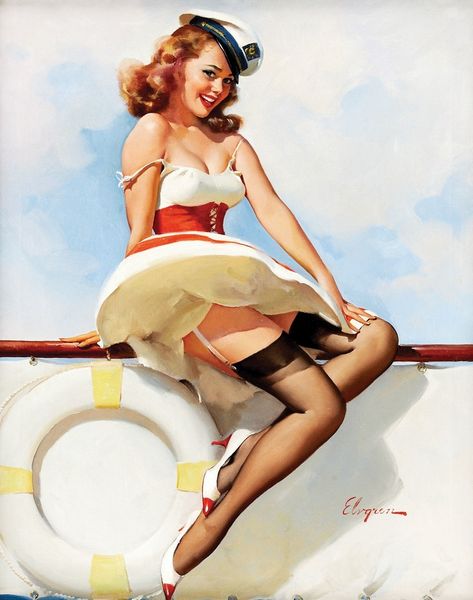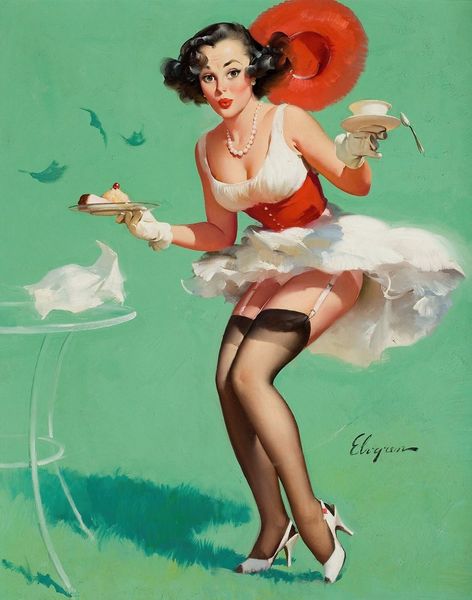
Copyright: Modern Artists: Artvee
Curator: Gil Elvgren's “Surprised,” created in 1952, certainly has a... certain visual impact. Editor: That’s putting it mildly. My first impression? Pure spectacle! The composition bursts with bold color. It's quite striking. The figure practically leaps off the canvas, demanding attention. Curator: And it's vital to note that Elvgren churned these images out as commercial pin-ups for Brown and Bigelow, printed en masse to adorn calendars and advertisements. Their wide distribution reflects 1950s societal values regarding gender and consumption. The emphasis on presenting an idealized woman as both desirable and available ties directly into post-war marketing strategies. Editor: Undoubtedly, but observe how Elvgren employs classical techniques, a soft sfumato around the model's form. See how her dress—an almost aggressively bright shade of orange—draws the eye? The lines of that ribbon snake across the composition leading the eye through every carefully constructed curve. Curator: But even that bold color is strategic. It aligns with the burgeoning consumer culture of the time—a period fueled by easily reproducible goods promising accessibility for all. Remember, Elvgren was an *illustrator,* producing work to *sell* ideas as much as the physical calendars. These images, cheap and widely circulated, participated in defining the ideal woman, perpetually surprised and available. Editor: Available, perhaps, but within an elegant framework. Consider the visual rhythm—the interplay between curvilinear form in the figure and the angularity of the box. Elvgren brilliantly uses contrast in line, and shape. I mean, what about the small, subtle hints like her open-toe heels and coy smile? Curator: Again, this so-called 'coyness' had direct links to consumerism. This carefully constructed persona equated femininity with both innocence and readiness for male attention, translating into economic gains as corporations utilized this manufactured ideal to encourage purchase across a spectrum of goods. This isn’t an artwork operating within a vacuum; its very being existed within marketplace transactions. Editor: I still think focusing on form enhances our understanding. See how that bright background puts her in almost surreal dimension that enhances her dreamlike allure? It’s beautiful painting regardless of the intent. Curator: Agreed. We can observe how mass culture impacted image-making even, or maybe particularly, in instances designed as popular consumption, so close visual analysis shows it had impacts on artistic integrity as well. Editor: Yes, it makes you consider how different the history of paintings might look depending on your chosen focus!
Comments
No comments
Be the first to comment and join the conversation on the ultimate creative platform.
